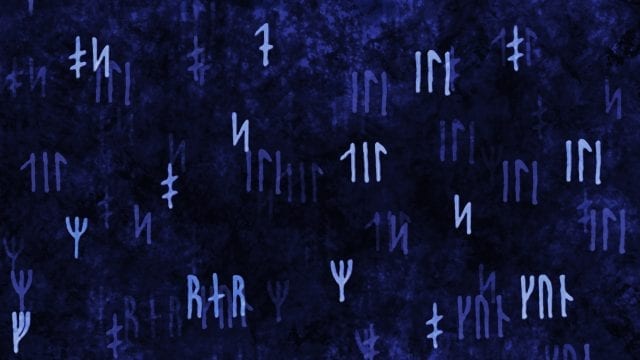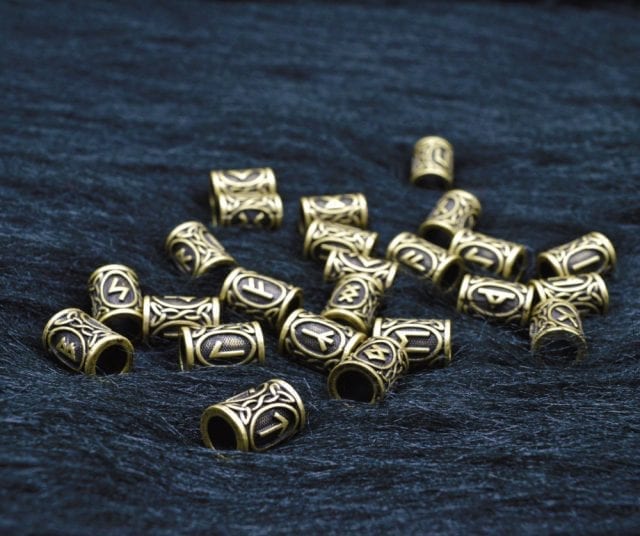
According to the Norse mythology, runes were used by Norns, three wise maidens, who carved them into the trunk of Yggdrasil, the world tree. The runes were very powerful and once carved into the tree, would affect all events on Nine Worlds. On top of Yggdrasil was Asgard, the home of Viking gods. The chief among them, Odin, watched Norns perform their magic and grow increasingly envious of their knowledge. Odin was famous for his thirst for knowledge and even gave up one eye to gain more wisdom. The trouble was that only Norns could see the runes and understand them.
Yggdrasil grows from Well of Urd, the same place where runes come from. Odin surmised that, in order to be able to discover runes, he must make a great sacrifice. So, he impaled himself on Yggdrasil, pushing his own spear through his heart and into the tree. Other gods were forbidden from aiding him, not even giving him a sip of water. For nine days, he hanged there, gazing into the bottomless Well of Urd, calling to runes, until finally, they revealed themselves to him. He committed the did to writing:

“Then I was fertilized and became wise;
I truly grew and thrived.
From a word to a word I was led to a word,
From a work to a work I was led to a work.”
The knowledge of runes allowed Odin to cast chants that greatly increased his powers. He could heal emotional and bodily wounds, free himself from constraints, bind his enemies and make their weapons useless, put out fires, to protect his friends in battle, win and keep a lover, even bring back the dead. Being a generous god, Odin passed the knowledge of runes to his people as well, Vikings.
In reality, the history of Viking runes is less poetic. They originated when Germanic people raided their southern neighbors and reached Italy. The most likely candidate was the Etruscan alphabet, which served as the basis for Elder Futhark runes, which were in use from 100 AD to 800 AD. Elder Futhark runes consisted of 24 characters and were used extensively throughout Germany and Scandinavia.

They were replaced by Younger Futhark, which became the dominant form of Viking runes from 8th to 12th centuries. Younger Futhark was a simpler alphabet, having only 16 characters. When we talk about Viking runes, this is the version we refer to, since their use coincided with the Viking age.
Young Futhark in time developed into Medieval runes, which had one sign for each phoneme of the old Norse language. In time, it combined with Latin to form a basis for modern Scandinavian alphabets.





